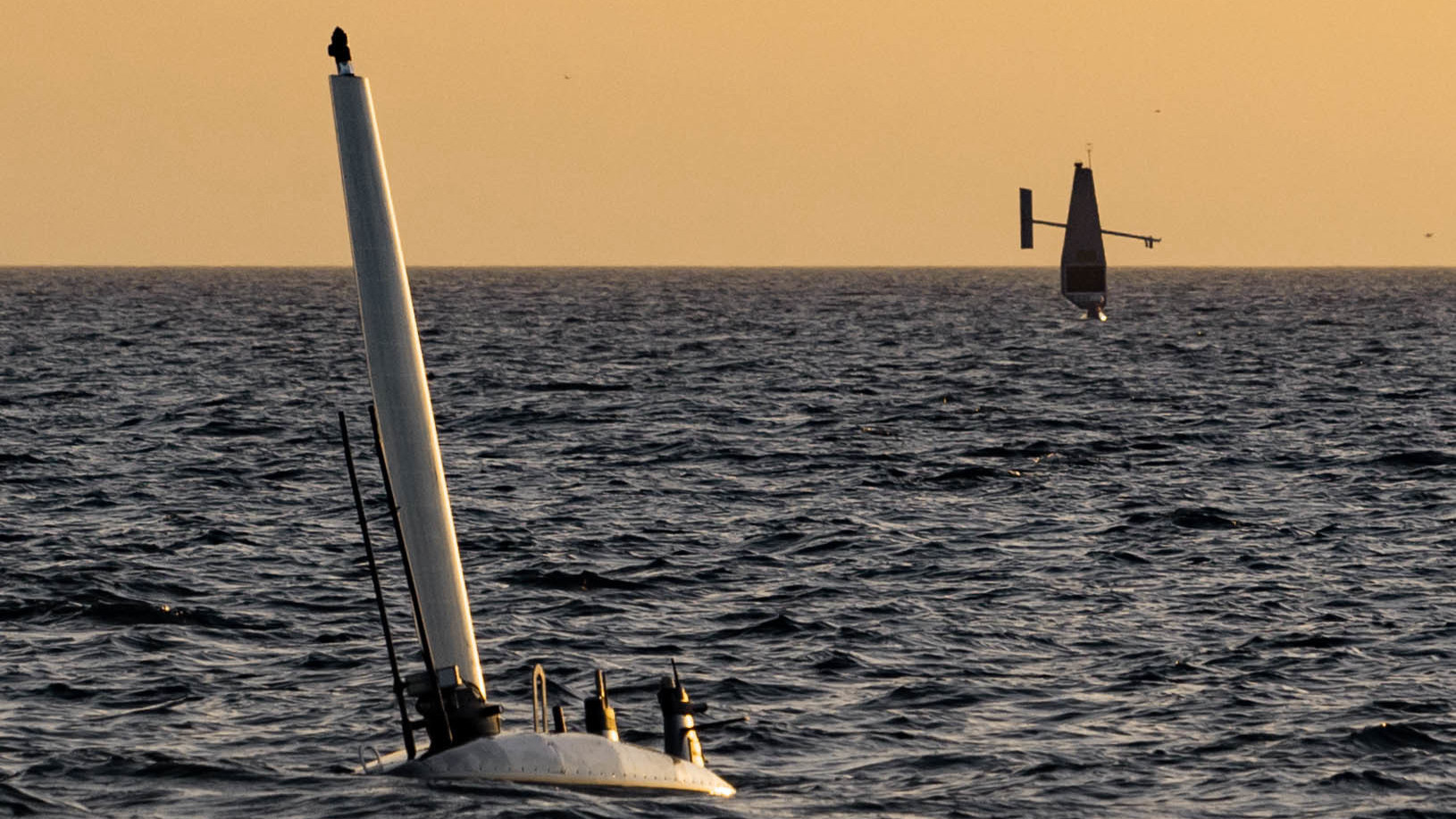

Earlier this month, a new kind of electric boat was demonstrated in Colombia. The uncrewed COTEnergy Boat debuted at the Colombiamar 2023 business and industrial exhibition, held from March 8 to 10 in Cartagena. It is likely a useful tool for navies, and was on display as a potential product for other nations to adopt.
While much of the attention in uncrewed sea vehicles has understandably focused on the ocean-ranging craft built for massive nations like the United States and China, the introduction of small drone ships for regional powers and routine patrol work shows just far this technology has come, and how widespread it is likely to be in the future.
“The Colombian Navy (ARC) intends to deploy the new electric unmanned surface vehicle (USV) CotEnergy Boat in April,” Janes reports, citing Admiral Francisco Cubides.
The boat is made from aluminum and has a compact, light body. (See it on Instagram here.) Just 28.5 feet long and under 8 feet wide, the boat is powered by a 50 hp electric motor; its power is sustained in part by solar panels mounted on the top of the deck. Those solar panels can provide up to 1.1 kilowatts at peak power, which is enough to sustain its autonomous operation for just shy of an hour.
The vessel was made by Atomo Tech and Colombia’s state-owned naval enterprise company, COTECMAR. The company says the boat’s lightweight form allows it to take on different payloads, making it suitable for “intelligence and reconnaissance missions, port surveillance and control missions, support in communications link missions, among others.”
Putting sensors on small, autonomous and electric vessels is a recurring theme in navies that employ drone boats. Even a part of the ocean that seems small, like a harbor, represents a big job to watch. By putting sensors and communications links onto an uncrewed vessel, a navy can effectively extend the range of what can be seen by human operators.
In January, the US Navy used Saildrones for this kind of work in the Persian Gulf. Equipped with cameras and processing power, the Saildrones identified and tracked ships in an exercise as they spotted them, making that information available to human operators on crewed vessels and ultimately useful to naval commanders.
Another reason to turn to uncrewed vessels for this work is that they are easier to run on fully electric power, as opposed to a diesel or gasoline. COTECMAR’s video description notes that the COTEEnergy Boat is being “incorporated into the offer of sustainable technological solutions that we are designing for the energy transition.” Making patrol craft solar powered and electric starts the vessels sustainable.
While developed as a military tool, the COTENERGY boat can also have a role in scientific and research expeditions. It could serve as a communications link between other ships, or between ships and other uncrewed vessels, ensuring reliable operation and data collection. Putting in sensors designed to look under the water’s surface could aid with oceanic mapping and observation. As a platform for sensors, the COTEnergy Boat is limited by what its adaptable frame can carry and power, although its load capacity is 880 pounds.
Not much more is known about the COTEnergy Boat at this point. But what is compelling about the vessel is how it fits into similar plans of other navies. Fielding small useful autonomous scouts or patrol craft, if successful, could become a routine part of naval and coastal operations.
With these new kinds of boat come new challenges. Because uncrewed ships lack humans, it can make them easier targets for other navies or possibly maritime criminal groups, like pirates. The same kind of Saildrones used by the US Navy to scout the Persian Gulf have also been detained, if briefly, by the Iranian Navy. With such detentions comes the risk that data on the ship is compromised, and data collection tools figured out, making it easier for hostile forces to fool or evade the sensors in the future.
Still, the benefits of having a flexible, solar-powered robot ship outweigh such risks. Inspection of ports is routine until it isn’t, and with a robotic vessel there to scout first, humans can wait to act until they are needed, safely removed from their remote robotic companions.
Watch a little video of the COTEnergy Boat below:

